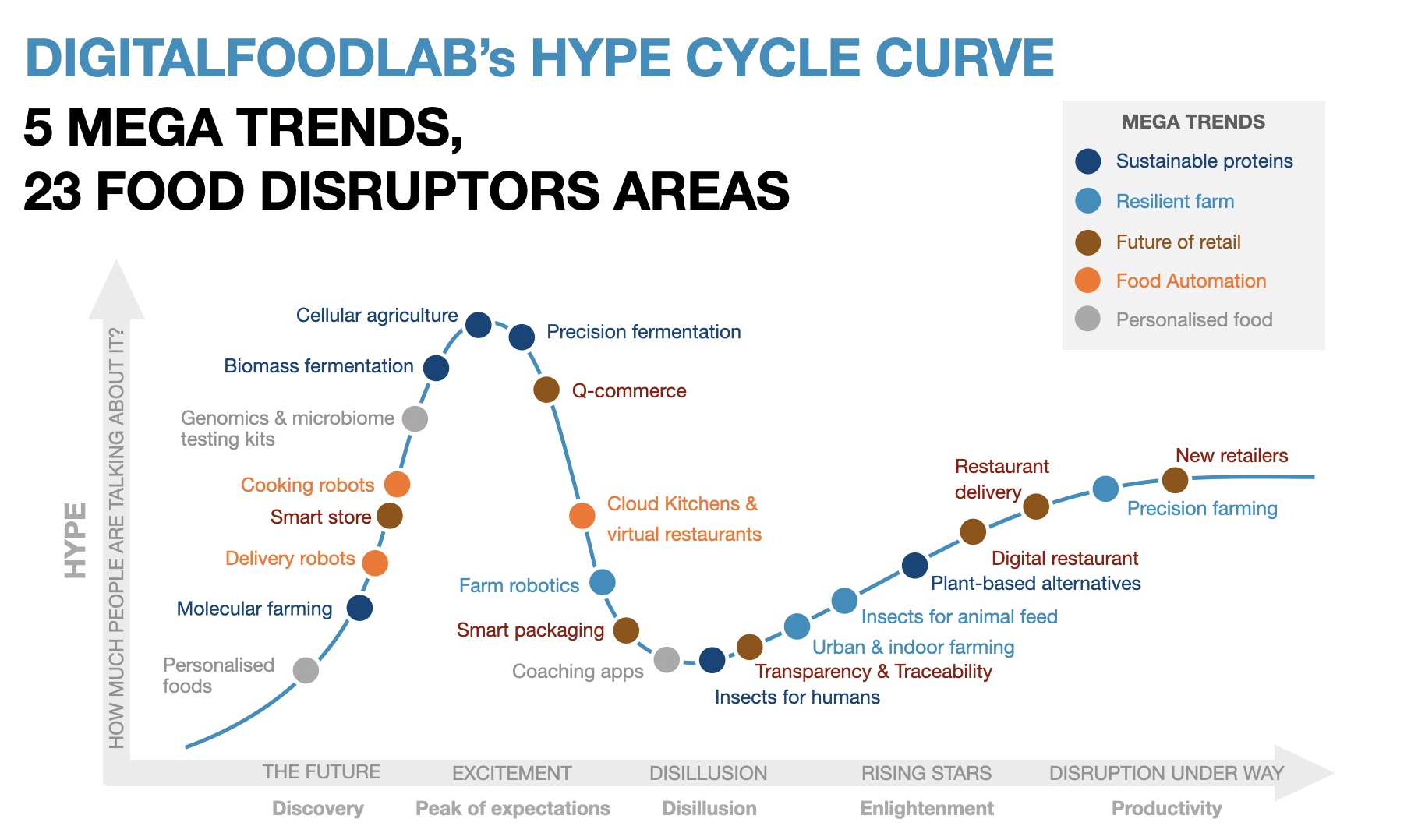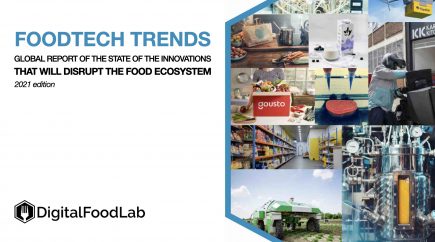What are the key trends in FoodTech in 2021?
DigitalFoodLab is happy to share with you the new edition of its yearly report on FoodTech Trends. Each year, we gather all our knowledge on this passioning ecosystem and try to make sense of it into an analysis of what is happening and what will happen next. This year, we have decided to make this 70-page long report public and available to all.
From our analysis and DigitalFoodLab’s database, we have identified 23 FoodTech trends and have grouped them into five “mega trends” that make it easier to understand the forces shaping this ecosystem:
- Sustainable proteins: even from outside the ecosystem, this would have been hard to miss with billions invested, dozens of new products reaching our supermarket shelves and discussions about almost magical technologies such as cellular agriculture. The goal here is simple: provide the world with multiple new reliable, sustainable and affordable sources of proteins. These won’t replace animal proteins in the short term but they may at least absorb the growing demand for more protein in the next10 to 15 years.
- The resilient farm: the growing desire for a shorter, more sustainable and resilient supply chain has only been accelerated by the pandemic. Entrepreneurs are working in three directions: making the farm smarter, inventing the crops of the future (notably to sustain the growth of alternative proteins) and creating the farm of the future.
- The future of retail: again the pandemic has boosted an already growing ecosystem. Entrepreneurs have shifted their focus from meal delivery to groceries, notably with new retailers and quick-commerce startups. Always at the cutting edge, the foodservice ecosystem is repositioning itself around better management of procurement, payment and more broadly solving the question of how to make the restaurant a more efficient operation.
- Food automation: new regulations and concerns are competing with the desire with faster and faster delivery of food products. Potential solutions range from automating all or parts of the food supply chain from warehouses to utilizing cloud kitchens and smart stores to deliveries performed by robots and drones.
- Personalised food: still a far-fetched dream, the idea of providing each consumer with food products (from nutritional advice to supplements or even meals) that are truly personalised to his or her needs is gaining more ground as DNA and microbiome companies grow. New ventures are combining multiple techniques to provide real value in terms of advice to the consumer. Even then, the question of converting it into a shopping list remains open.
As shown by DigitalFoodLab’s multiple reports and insights, investments in the FoodTech ecosystem are rising fast and have reached an inflexion in the first half of 2021. Beyond new ventures and R&D, this money tends to go toward financing infrastructure investments to realise new capabilities such as bioreactors, plants to produce new animal feed, plant-based substitutes, etc. This shows that some of the trends underlined in this report are getting closer to the point where they will be competitive and will disrupt the market. Others are still maturing, but entrepreneurs have the means to make them move much faster.


The strengths of this report
- DigitalFoodLab is the first FoodTech strategy consultancy in Europe
- Investors, agribusiness companies, retailers, and entrepreneurs, find all information and analysis you need to understand and act on FoodTech
- A unique analysis of the evolution of the global FoodTech ecosystem
Get in Touch
We work with our clients to identify and act on the best Foodtech opportunities
By email
contact@digitalfoodlab.com
Our office
14 avenue de l’Opéra, 75001 Paris, France

